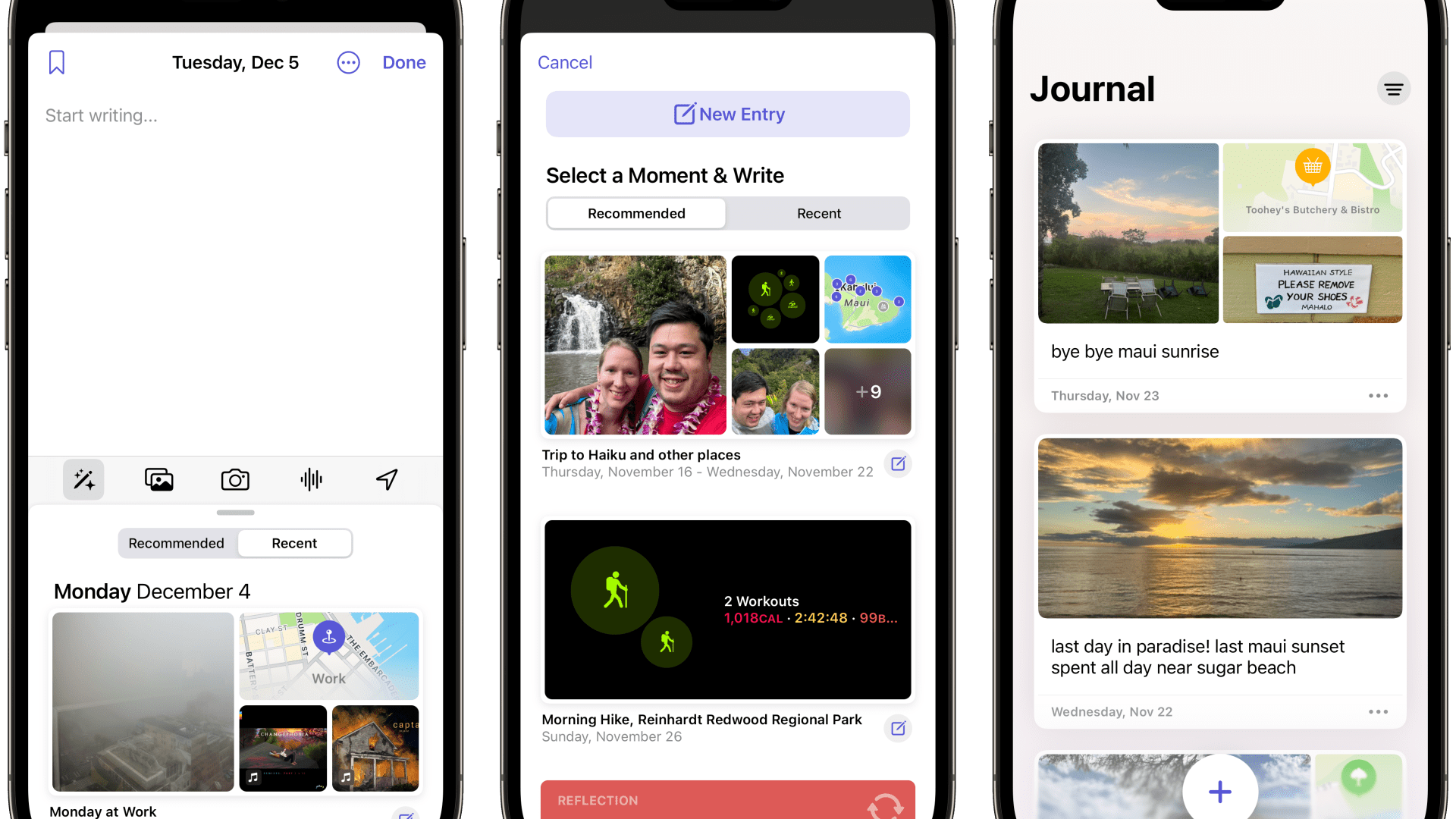
- Apple released an AI-powered journal app for iPhones as part of the iOS 17.2 update.
- When you tap the magic wand icon, it suggests things to write about based on what it knows from your phone, such as the music you were listening to or where you were.
Apple released an artificial intelligence-powered journal app for iPhones on Monday as part of its iOS 17.2 update.
The Journal app, which was first announced back in June, uses Apple's Siri to intelligently suggest topics to journal about. It might, for example, prompt you to write about music you were listening to, or document appointments you had that day and workouts you completed.
The Journal app is one example of how Apple continues to invest in new iPhone features on a yearly basis to protect its iPhone franchise from competition from Google's Android and other phone makers.
Get DFW local news, weather forecasts and entertainment stories to your inbox. Sign up for NBC DFW newsletters.
The iPhone is still the most important product Apple makes, accounting for $205 billion in sales in its fiscal 2023, or about 52% of the company's overall sales. The more that Apple adds features that are used on a daily basis — such as its credit card, its app store or its iMessage service — the harder it is for most users to switch to a competing phone brand or operating system.
The Journal app also highlights Apple's approach to AI. Apple's AI software, such as what's powering the Journal app, runs on the device itself, not on a server in the cloud, which has privacy advantages over Google's and Microsoft's internet-based approach, especially for sensitive information such as health data or travel plans. Apple also doesn't highlight AI as a key feature in its marketing — it prefers the more academic phrase "machine learning."
How the Journal app works

Apple's Journal app is simple. I've been testing it on a beta version of iOS for a month. When you open the app — you can lock its contents with Apple's FaceID — you're brought to a screen with a list of your entries and a single "+" button.
Money Report
Pressing the plus button lets you start a new entry. At first, it looks like a standard text entry box, like in Apple's Notes. You can type in some thoughts, add a photo, photos you've taken, an audio recording or drop in an Apple Maps location of where you've been. The app automatically timestamps the post.
After you've added several entries, the front page of the app fills up with your previous entries and you can browse and edit old posts. You can filter your old entries by those that include a photo, an activity or those that are tagged with a certain place. Journal entries aren't published anywhere, just stored inside your individual Journal app.
Where the machine learning magic appears is under the magic wand icon, or the "moments menu." When you tap the magic wand icon, it suggests things to write about based on what it knows from your phone, such as the music you were listening to or where you were.
For example, when I pressed the moments tab on Monday, it suggested I write about a recent vacation — bringing up a map of where I was, hikes I did while I was on the trip, music I listened to and photos I took when I was there. For one entry, I simply recorded an audio file of the waves crashing, so I could return to the moment later. However, it didn't realize that I had already fully documented that vacation inside the Journal app.
The Journal app's push notifications can also prompt the user. It often sends a push notification when it detects that you've done an activity that you might want to reflect on. For example, I recently had to rush to catch a ferry. My watch noted a walking workout, and I was listening to music at the time. Journaling workouts could be very useful for people who are training for marathons or other athletic achievements.
The Journal app also sent me notifications asking whether I wanted to write about the experience. Some days, notifications sent by the app simply ask you to reflect on your day. Apple also includes several prompts designed to spur reflection: "Make an audio recording of your surroundings. Write about what you notice."
The app can also be social, suggesting to journal about activities with others when it detects contacts nearby.
Apple's Journal app is basic right now. Nothing it does besides suggestions couldn't be done in an old-fashioned paper journal, or even a page inside Apple's Notes app. But the suggestions and integration with Apple's other services set it apart from more low-tech approaches and highlight how Apple's integration of hardware and software means that it can learn what's important in your life without collecting your data on its servers.
Apple is even making its machine learning model that guesses what might be important to the user available to other apps through a programming interface, meaning other apps could benefit from Apple's AI.
Apple needs to continue to improve the Journal app to find a place in most people's everyday routines. It would be better if it could automatically fill out more of an entry, especially ones based on photos or other activities. For now, there's no export function, which would enable the Journal app to become a more useful place to collect thoughts and ideas that could one day be published.
How to get the Journal app on your iPhone
The journal app is available in iOS 17.2, which can be downloaded on modern iPhones now. Here's how to get it:
- Open Settings.
- Tap General.
- Choose Software Update.
You may notice some other new features in iOS 17.2. The update also includes the ability to change the default alert sound, sticker reactions in iMessage and a machine learning feature that blurs photos and other content sent to you that may include nudity.
Don't miss these stories from CNBC PRO:
- Five stocks to buy before the year-end, according to the pros
- Morgan Stanley fund manager names 4 top stocks to buy 'on the cheap'
- JPMorgan picks China stocks to buy now. Alibaba's not on the list
- Analysts love this self-driving car tech stock and give it over 400% upside






